Candidates preparing for the SSC MTS Exam 2025 must give special attention to Political Science (Polity) questions, as they form an important part of the General Awareness section. Understanding topics like the Constitution, Fundamental Rights, Parliament, Judiciary, and important Articles is important for scoring well. To help aspirants in their revision, we have compiled a list of Important Political Science Questions For SSC MTS Exam 2025 that are frequently asked in SSC exams. Practicing these questions will not only boost your preparation but also improve your accuracy and confidence in the actual exam. Let’s go through the questions below!
Important Political Science Questions For SSC MTS Exam 2025
Q.1 Who elects the members of the Estimates Committee in the Indian Parliament?
- Members of the Rajya Sabha
- Prime Minister
- Members of the Lok Sabha
- President of India
Answer: C
Sol:
The correct answer is (C) Members of the Lok Sabha
Explanation:
- The Estimates Committee is a committee of the Lok Sabha responsible for examining the estimates included in the Union Budget and ensuring that the expenditure plans of the government are in alignment with the budget.
- Members of the Lok Sabha elect the members of the Estimates Committee from among themselves.
- The Estimates Committee consists of 30 members and is constituted for one year.
Information Booster:
- The Estimates Committee plays a vital role in scrutinizing the government’s budget and examining the financial expenditure to ensure accountability in the utilization of public funds.
- It is empowered under Rule 267 of the Rules of Procedure and Conduct of Business in Lok Sabha.
Additional Information:
Articles and Amendments related to the Options:
- Option A (Members of the Rajya Sabha):
- The Rajya Sabha is the Council of States and is primarily concerned with representing the states and union territories in the Parliament.
- Article 80 of the Indian Constitution Deals with the composition of the Rajya Sabha.
- Article 84: Provides the qualifications for membership in both the Lok Sabha and Rajya Sabha.
- Option B (Prime Minister):
- The Prime Minister is the head of the executive branch of the government and leads the Council of Ministers.
- While the Prime Minister plays an influential role in governance, they do not directly elect members of the Estimates Committee.
- Article 75 of the Indian Constitution Deals with the appointment of the Prime Minister and other ministers.
- Article 74: Provides for the advice of the Council of Ministers to the President.
- Option C (Members of the Lok Sabha):
- The Estimates Committee is a committee of the Lok Sabha, and its members are elected by the Lok Sabha members.
- Article 81 of the Indian Constitution Deals with the composition of the Lok Sabha (House of the People).
- Article 83: Deals with the duration of the Lok Sabha and its dissolution by the President.
- Rule 267 of the Rules of Procedure and Conduct of Business in Lok Sabha Specifies the procedure for the formation of the Estimates Committee.
- Option D (President of India):
- The President of India does not play a direct role in electing members of parliamentary committees.
- Article 52: States that there shall be a President of India.
- Article 53: Specifies the executive powers of the President, including appointments of key officials, but not of parliamentary committee members.
Q.2 What electoral system does India primarily use for its general elections?
- Mixed Member Proportional (MMP)
- First Past the Post (FPTP)
- Single-member district plurality voting (SMDP)
- Single Transferable Vote (STV)
Answer: B
Sol:
The correct answer is: (b) First Past the Post (FPTP)
Explanation:
- India uses the First Past the Post (FPTP) electoral system for Lok Sabha (general) elections, where the candidate receiving the highest number of votes in a constituency wins, regardless of majority.
Information Booster:
- FPTP is simple, cost-effective, and widely used in countries like the UK and Canada.
- Each constituency elects one representative, and the system favors larger political parties.
Additional Information:
- (a) Mixed Member Proportional (MMP): This is used in countries like Germany and New Zealand, not India.
- (c) Single-member district plurality voting (SMDP): While similar in structure, the specific term “FPTP” is the recognized system used in India.
- (d) Single Transferable Vote (STV): India uses STV only for Rajya Sabha and Presidential elections, not general (Lok Sabha) elections.
Q.3 The doctrine of judicial review originated in which country?
- United States of America
- India
- United Kingdom
- France
Answer: A
Sol:
The correct answer is (A) United States of America.
Explanation :
- The doctrine of judicial review originated in the United States of America.
- It was established in the landmark case of Marbury v. Madison (1803), where the U.S. Supreme Court, under Chief Justice John Marshall, declared that the court had the power to review and potentially invalidate laws and executive actions that were inconsistent with the Constitution.
Information Booster:
- Judicial Review in India:
- In India, the Supreme Court has declared the power of judicial review as a ‘Basic Feature’ of the Constitution, meaning it cannot be curtailed or excluded, even by a Constitutional Amendment Act.
- Although the term ‘judicial review’ is not explicitly mentioned in the Indian Constitution, several constitutional provisions confer the power of judicial review on the Supreme Court and High Courts:
- Article 13: Provides that any law inconsistent with Fundamental Rights is null and void.
- Article 32: Empowers the Supreme Court to issue writs for the enforcement of Fundamental Rights.
- Article 226: Empowers the High Courts to issue writs for the enforcement of Fundamental Rights and for other purposes.
Additional Information:
- The Indian Constitution borrows several features from the British and French Constitutions.
- From the UK, India adopted the parliamentary system of government, rule of law, single citizenship, and aspects of the legislative process.
- From France, India adopted the ideals of liberty, equality, and fraternity, which are enshrined in the Preamble.
Q.4 Where is the audit report of an apex co-operative society required to be presented?
- District Office
- State Legislature
- High Court
- State Secretariat
Answer: B
Sol:
Correct Answer is (B) State Legislature.
Sol.
The audit report of an apex co-operative society is required to be presented before the State Legislature. This is part of the transparency and accountability process for co-operative societies, ensuring that their financial activities and operations are subject to scrutiny by the legislature for public interest and compliance with relevant laws.
Information Booster:
- Apex co-operative societies, which operate at the state or national level, play a vital role in economic and social development, and their operations need to be transparent and accountable.
- The presentation of audit reports before the State Legislature helps ensure that the co-operative society is functioning according to the established laws and is maintaining financial integrity.
- Audit Reports provide insights into the financial health and governance of the society, which are vital for the stakeholders, including the government, members, and the public.
Additional Information:
- Audit Reports are typically prepared by qualified auditors and cover aspects like income, expenditures, assets, and liabilities.
- The State Legislature is responsible for reviewing the audit report and can take necessary actions if discrepancies or issues are found.
Q.5 How does Article 1 describe India about its states?
- As a confederation of states
- As a federation of states
- As a Union of States
- As an alliance of states
Answer: C
Sol:
The correct answer is: (c) As a Union of States
Explanation:
- Article 1 of the Indian Constitution describes India as a Union of States, not as a federation or confederation.
- This means that India is a single, indivisible entity, and its states have no right to secede.
- The term “Union of States” reflects the centrality and permanence of the Union, emphasizing the indestructible nature of the Indian state.
Information Booster:
• Article 1 states that “India, that is Bharat, shall be a Union of States,” emphasizing the integrity of the country.
• The Constitution does not describe India as a federation, as the states do not have the option to withdraw from the Union.
• The term Union signifies a strong, centralized government structure, unlike a federation, where states may have greater autonomy.
Additional Knowledge:
• The Indian Union was formed by the integration of princely states after independence, and the states have been created and reorganized by acts of Parliament.
• This differs from a federation, where states typically have more autonomy in many areas, as seen in countries like the USA.
• India’s Union reflects a system of centralized governance with a strong central government while still allowing for state powers under the federal framework.
Q.6 In which part of the Indian Constitution are Fundamental Duties enshrined?
- IV-A
- IV-B
- V
- VI
Answer: A
Sol:
The correct answer is:(A) IV-A
Explanation:
- Fundamental Duties are enshrined in Part IV-A of the Indian Constitution, which was added by the 42nd Amendment Act of 1976.
- These duties are a moral obligation of citizens, aiming to promote a sense of responsibility towards society and the nation.
Information Booster:
- There are 11 Fundamental Duties listed in Article 51A of the Indian Constitution.
- The duties include respect for the national flag, promotion of harmony, and safeguarding the environment.
- Part IV-A is non-justiciable, meaning that they are not enforceable by law, but they serve as guiding principles.
- Fundamental Duties complement Fundamental Rights and Directive Principles of State Policy.
- These duties apply to Indian citizens, and their violation may lead to moral or social sanctions, but not legal penalties.
Additional Information:
- Part IV-B: Deals with the Directive Principles of State Policy, which guide the government in making laws but are not enforceable by courts.
- Part V: Deals with the Union, specifically the organization of the Union Executive, Parliament, and related matters.
- Part VI: Deals with the States, covering the organization and functions of the State Executive, Legislature, and related provisions.
Q.7 What additional group does the Jammu and Kashmir Local Bodies Laws (Amendment) Bill, 2024 aim to provide reservation for in panchayats and Municipal Bodies of Jammu and Kashmir?
- Other Backward Classes (OBCs)
- Afghan Indians
- Jewish community
- Jains
Answer: A
Sol:
The correct answer is: (A) Other Backward Classes (OBCs)
Explanation:
• The Jammu and Kashmir Local Bodies Laws (Amendment) Bill, 2024 extends reservation to Other Backward Classes (OBCs) in panchayats and municipal bodies of J&K—a provision previously absent.
Information Booster:
• OBC reservation in local governance aligns J&K with constitutional standards under Articles 243D & 243T.
• The amendment updates J&K’s Panchayati Raj Act and Municipal Acts to include OBCs alongside SCs and STs.
• This marks the first time OBCs gain local body representation in J&K, correcting a 75-year omission.
Q.8 Under its original jurisdiction, the Supreme Court of India can adjudicate disputes between:
- The Centre and one or more states
- A state government and a private corporation
- Two private citizens from different states
- Two municipal corporations of different states
Answer: A
Sol:
The correct answer is (A) The Centre and one or more states
Explanation:
- Under Article 131 of the Indian Constitution, the Supreme Court has original jurisdiction to adjudicate disputes between:
- The Centre (Union government) and one or more states.
- This means that if there is a dispute regarding the distribution of powers, legislative competence, or conflict over constitutional matters between the central government and any state or multiple states, the Supreme Court can hear the case directly.
Information Booster:
- The original jurisdiction of the Supreme Court refers to cases that are heard directly by the Supreme Court, without first being heard in lower courts.
- This jurisdiction is necessary in resolving conflicts between the states and the Union, which could otherwise lead to prolonged legal battles.
Additional Information:
- Option B (A state government and a private corporation): This does not fall under the original jurisdiction of the Supreme Court, as such matters are typically dealt with by lower courts or specialized tribunals.
- Option C (Two private citizens from different states): Disputes between private citizens fall under the jurisdiction of civil courts and not the Supreme Court.
- Option D (Two municipal corporations of different states): Disputes between municipal corporations do not fall under the original jurisdiction of the Supreme Court, as they are not constitutional matters.
Q.9 Which of the following is NOT a constitutional body?
- Attorney General of India
- Special Officer for Linguistic Minorities
- National Commission for Minorities
- Comptroller and Auditor General
Answer: C
Sol:
The correct answer is (c) National Commission for Minorities
· The National Commission for Minorities (NCM) is a statutory body, not a constitutional body.
· It was established under the National Commission for Minorities Act, 1992.
· Constitutional bodies are mentioned explicitly in the Constitution of India.
· NCM deals with safeguarding the rights of religious and linguistic minorities.
· It recommends measures for their welfare and reports to the central government.
· Unlike the CAG or AGI, its powers are limited and non-binding.
Information Booster:
• NCM deals with six notified minority communities.
• Statutory bodies are created through Acts of Parliament.
• The Attorney General of India is mentioned under Article 76.
• The CAG is defined under Article 148 of the Constitution.
• The Special Officer for Linguistic Minorities is under Article 350B.
• Constitutional bodies derive power directly from the Constitution.
Additional Information:
• Attorney General of India – Constitutional post under Article 76.
• Special Officer for Linguistic Minorities – Under Article 350B.
• National Commission for Minorities – Statutory, not mentioned in the Constitution.
• Comptroller and Auditor General – Constitutional authority under Article 148.
Q.10 What is the maximum time limit for a co-operative society to conduct its annual general meeting after the close of the financial year?
- 6 months
- 9 months
- 3 months
- 12 months
Answer: A
Sol:
The correct answer is (a) 6 months.
- As per the Co-operative Societies Act, 1912 and various state-specific cooperative laws, a co-operative society must hold its Annual General Meeting (AGM) within 6 months from the end of its financial year.
- The financial year for most co-operatives ends on March 31, and hence the AGM must be conducted no later than September 30 of the same year.
- This regulation ensures that the society is accountable to its members and maintains transparency regarding its financial health and operational activities.
Information Booster:
- Article 10 of the Model Bye-laws for Co-operative Societies specifies that the AGM must be held within six months after the close of the financial year.
- In case of failure to conduct the AGM within the stipulated time, the co-operative society could face penalties, and the society’s management may be subjected to scrutiny under relevant provisions.
- The Co-operative Societies Act (as amended in various states) and Section 42 of the Act also outline the requirements for the AGM, including the need for approval of accounts and election of office bearers.
- Co-operatives are required to submit their audited accounts and financial reports before the AGM, which provides members with the necessary information to make informed decisions.
Q.11 According to Article 246 of the Indian Constitution, Parliament has exclusive powers to make laws on subjects mentioned in which of the following lists?
- State List
- Concurrent List
- Local List
- Union List
Answer: D
Sol:
The correct answer is: (d) Union List
Explanation:
- Article 246 of the Indian Constitution lays down the distribution of legislative powers between the Parliament and State Legislatures.
- According to Article 246(1), Parliament has exclusive powers to make laws on matters enumerated in the Union List (List I) of the Seventh Schedule.
- These are subjects of national importance such as defense, foreign affairs, atomic energy, banking, etc.
Information Booster:
- Union List contains currently 100 subjects, originally 97.
- Examples: Defence, Atomic Energy, Railways, Banking, Citizenship, etc.
- State List (List II) – Laws made by State Legislatures on state-related matters.
- Concurrent List (List III) – Both Parliament and State Legislatures can make laws; in case of conflict, Parliament’s law prevails.
- The division of powers is inspired by the Canadian federal model.
- The Seventh Schedule of the Constitution outlines these three lists.
Q.12 Which position within the Union Council of Ministers of India is immediately below the Prime Minister in hierarchy?
- Cabinet Minister
- Parliamentary Secretary
- Minister of State
- Deputy Minister
Answer: A
Sol:
The correct answer is (a) Cabinet Minister
Explanation:
- The Cabinet Minister is the senior-most rank after the Prime Minister in the Union Council of Ministers.
- Cabinet Ministers are in charge of important ministries and are part of the Union Cabinet, the central decision-making body.
- The functioning and structure of the Council of Ministers are provided under Article 74 (Council to aid and advise the President) and Article 75 (Appointment, tenure, and responsibility of Ministers).
- The 44th Constitutional Amendment Act, 1978 clarified that the President must act in accordance with the advice of the Council of Ministers.
- The Cabinet is collectively responsible to the Lok Sabha, as mandated by Article 75(3) of the Constitution.
Information Booster:
- Three tiers in the Council:
- Cabinet Ministers – senior-most, lead key ministries
- Ministers of State – with or without independent charge
- Deputy Ministers – assist senior ministers
- Cabinet Ministers are members of Cabinet Committees, e.g., Cabinet Committee on Security (CCS), Appointments Committee of the Cabinet (ACC).
- The maximum number of ministers, including the Prime Minister, is capped at 15% of the total strength of the Lok Sabha by the 91st Constitutional Amendment Act, 2003.
- Cabinet decisions are taken collectively, and individual ministers must support them publicly (collective responsibility).
Additional Information:
- Option B – Parliamentary Secretary: Not part of the Union Council of Ministers. This post has faced disqualification issues under the Office of Profit clause (Article 102).
- Option C – Minister of State: Junior to Cabinet Ministers; may have independent charge or assist a Cabinet Minister.
- Option D – Deputy Minister: Has the lowest rank; assists MoS or Cabinet Ministers; not part of the Cabinet.
Q.13 An award made by a Lok Adalat has the same status as a __________.
- Supreme Court order
- High Court judgement
- Magistrate’s order
- Civil Court decree
Answer: D
Sol:
The correct answer is (d) Civil Court decree
- An award passed by a Lok Adalat is deemed to be a decree of a civil court under Section 21 of the Legal Services Authorities Act, 1987.
- It is final and binding on all parties involved, and no appeal lies against such an award.
- This ensures speedy enforcement of the settlement and avoids prolonged litigation.
Information Booster:
- Lok Adalats are a form of alternative dispute resolution (ADR) aimed at providing free, fast, and informal justice.
- They can take up pending court cases and pre-litigation matters with mutual consent of the parties.
- Awards are based on compromise or settlement, not on the merits of the case.
- Lok Adalats are organized at various levels: State, District, Taluk, and High Court.
- They help reduce the burden on the judiciary by resolving minor and civil disputes efficiently.
Q.14 The President of India possesses the power to remove or recall officials such as Governors and Ambassadors. This power is exercised based on the advice of:
- a resolution passed by the Parliament
- the Union Council of Ministers
- the State Governments
- the Supreme Court of India
Answer: B
Sol:
The correct answer is (B) the Union Council of Ministers
Explanation:
- As per Article 74 of the Indian Constitution, the President of India exercises executive powers only on the advice of the Union Council of Ministers headed by the Prime Minister. This includes the power to remove or recall officials like Governors and Ambassadors.
- The advice given by the Council of Ministers is binding on the President, in line with the doctrine of collective responsibility.
Information Booster:
- The President is a constitutional head and works in accordance with the advice given by the Union Council of Ministers.
- Governors are appointed by the President, but they act according to the advice of the Chief Minister of the respective state, in line with the principle of cooperative federalism.
- Ambassadors are appointed by the President on the advice of the Prime Minister and the Union Cabinet.
Additional Information:
- Option A (a resolution passed by the Parliament): A resolution passed by Parliament is not required for the removal of Governors or Ambassadors; the power rests with the President on the advice of the Union Cabinet.
- Option C (the State Governments): The State Government’s advice is relevant for the Governor’s functions within the state, but not for their removal, which is done by the President based on the Union Cabinet’s advice.
- Option D (the Supreme Court of India): The Supreme Court does not play a role in advising the President regarding the removal or recall of officials.
Q.15 Which article of the Indian Constitution provides for abolition of titles?
- Article 22
- Article 23
- Article 15
- Article 18
Answer: D
Sol:
The correct answer is: (D) Article 18
Explanation:
- Article 18 of the Indian Constitution provides for the abolition of titles.
- It prohibits the state from granting any titles to any citizen of India, except for military and academic distinctions.
- It also prevents any citizen from accepting titles from foreign governments.
Information Booster:
- Article 18 was included to prevent the continuation of hereditary and non-hereditary titles that could create inequalities among citizens.
- The provision is intended to uphold the principle of equality and prevent aristocratic privileges.
Additional Information:
- (A) Article 22: Deals with protection against arrest and detention in certain cases.
- (B) Article 23: Prohibits trafficking in human beings and forced labor.
- (C) Article 15: Prohibits discrimination on grounds of religion, race, caste, sex, or place of birth.
Q.16 Who administers the oath of office and secrecy to the Union Ministers under Article 75(4) of the Constitution of India?
- President of India
- Prime Minister
- Vice President
- Chief Justice of India
Answer: A
Sol:
The correct answer is (A) President of India.
Explanation:
- As per Article 75(4) of the Constitution of India, the President of India administers the oath of office and secrecy to the Union Ministers.
- The oath is taken before the President when a new minister is appointed, and it is done in the presence of the President to ensure that the minister will uphold the Constitution and serve the nation faithfully.
Information Booster:
- The oath administered includes an affirmation to bear true faith and allegiance to the Constitution of India and to discharge the duties of the office faithfully.
- After the President administers the oath, the Minister can take charge of their office and assume their duties.
- The Prime Minister is appointed by the President, and it is the Prime Minister who then recommends the names of other ministers to the President.
Q.17 Originally, how many languages were included in the 8th Schedule of the Indian Constitution?
- 18
- 10
- 22
- 14
Answer: D
Sol:
The correct answer is: (D) 14
Explanation:
- The 8th Schedule of the Indian Constitution originally included 14 languages. These languages were recognized for official use in the Indian Parliament and other government functions.
- The 14 languages included in the 8th Schedule initially were:
- Assamese, Bengali, Gujarati, Hindi, Kannada, Kashmiri, Malayalam, Marathi, Oriya (now Odia), Punjabi, Sanskrit, Tamil, Telugu, and Urdu.,
Information Booster:
- The 8th Schedule was created to promote linguistic diversity and to allow various languages to be used for official purposes.
- Constitutional Amendments expanded the list of languages over time:
- 21st Amendment (1967) added Sindhi.
- 71st Amendment (1992) added Konkani, Manipuri, and Nepali.
- 92nd Amendment (2003) added Bodo, Santhali, Maithili, and Dongari.
- As of now, the 8th Schedule recognizes 22 languages, but 14 was the original number.
Q.18 Which Indian Constitutional Amendment Act states about the minimisation of inequalities in income, status, facilities and opportunities as Directive Principle to State Policy?
- 44th Amendment Act of 1978
- 86th Amendment Act of 2002
- 42nd Amendment Act of 1976
- 97th Amendment Act of 2011
Answer: A
Sol:
The correct answer is (A) 44th Amendment Act of 1978
Explanation:
- The 44th Amendment Act of 1978 added a new Directive Principle to the Constitution of India that addresses the minimisation of inequalities in income, status, facilities, and opportunities.
- This was done by inserting Clause (2) into Article 38 of the Indian Constitution, which specifically mandates that the State should work towards reducing inequalities in income, status, facilities, and opportunities for individuals and groups in different regions and professions.
- The purpose of this amendment was to strengthen the State’s dedication to lessening socio-economic gaps and fostering a more equitable society, in line with the social justice principles enshrined in the Preamble.
Information Booster:
- Article 38(2): “The State shall, in particular, direct its policy towards securing that the ownership and control of material resources of the community are so distributed as to subserve the common good.”
- This Directive Principle emphasizes economic equality, encouraging policies aimed at narrowing disparities between rich and poor, and creating opportunities for all citizens to benefit from the nation’s development.
Additional Information:
- Option B (86th Amendment Act of 2002): Incorrect. The 86th Amendment Act primarily focused on the right to education for children aged 6-14, making it a fundamental right.
- Option C (42nd Amendment Act of 1976): Incorrect. The 42nd Amendment focused on enhancing the socialist and secular character of the Indian Constitution but did not address the specific issue of inequalities in income and status.
- Option D (97th Amendment Act of 2011): Incorrect. The 97th Amendment Act pertained to cooperative societies and their governance, not to economic inequalities.
Q.19 Which Constitutional provision directs the State to ensure that justice is not denied to any citizen due to economic or other disabilities?
- Article 32
- Article 39A
- Article 21
- Article 14
Answer: B
Sol:
The correct answer is (b) Article 39A.
- Article 39A of the Indian Constitution directs the State to ensure that justice is not denied to any citizen by reason of economic or other disabilities.
- This provision mandates that the State provide free legal aid to ensure that individuals, particularly from disadvantaged backgrounds, have access to legal representation and justice.
- The Legal Services Authorities Act, 1987 was enacted to implement this provision by establishing Legal Aid Committees at the national, state, and district levels.
Information Booster:
- Article 39A is part of the Directive Principles of State Policy (DPSP), which, although not enforceable in courts, serve as guiding principles for law and policy making.
- Free Legal Aid: The State is required to make arrangements for free legal aid, ensuring that justice is accessible to all, regardless of their financial status.
- Social Justice: This provision is essential for promoting social justice and equality before the law, especially for the economically disadvantaged sections of society.
Additional Information:
- Article 32: Deals with the right to constitutional remedies, allowing individuals to approach the Supreme Court if their fundamental rights are violated.
- Article 21: Guarantees the right to life and personal liberty, which includes the right to a fair trial, but does not specifically address economic or other disabilities in access to justice.
- Article 14: Ensures equality before the law and equal protection of the laws, but it does not specifically address the issue of access to justice based on economic or other disabilities.
Q.20 The Fundamental Duty to ‘abjure violence’ was initially suggested by which of the following committees/commissions?
- Ashok Mehta Committee
- Mandal Commission
- Swaran Singh Committee
- Sarkaria Commission
Answer: C
Sol:
The correct answer is (c) Swaran Singh Committee
Explanation:
- The Swaran Singh Committee was formed in 1976 to recommend the inclusion of Fundamental Duties in the Constitution.
- It suggested the duty for citizens to abjure violence and uphold the spirit of peace and harmony.
- Based on these recommendations, Article 51A was added to the Constitution via the 42nd Amendment Act, 1976.
- The objective was to instill civic responsibility in citizens during the Emergency period.
- Initially, 10 Fundamental Duties were included.
Information Booster:
- The 11th Fundamental Duty (Right to Education-related) was added in 2002 by the 86th Amendment.
- Duties are non-justiciable, meaning they cannot be enforced in courts.
- Other duties include safeguarding public property, promoting scientific temper, and protecting heritage.
- The Committee was headed by Sardar Swaran Singh, former Union Minister.
- Inspired by socialist constitutions like that of the USSR.
Additional Information:
- Option A (Ashok Mehta Committee): Related to Panchayati Raj reforms.
- Option B (Mandal Commission): Recommended OBC reservations.
- Option D (Sarkaria Commission): Reviewed Centre–State relations.
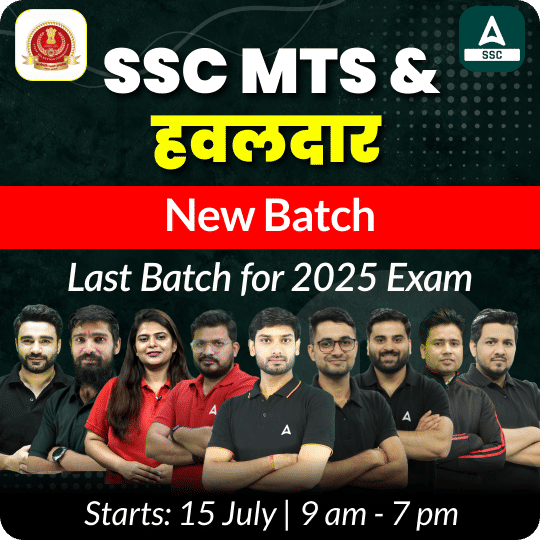

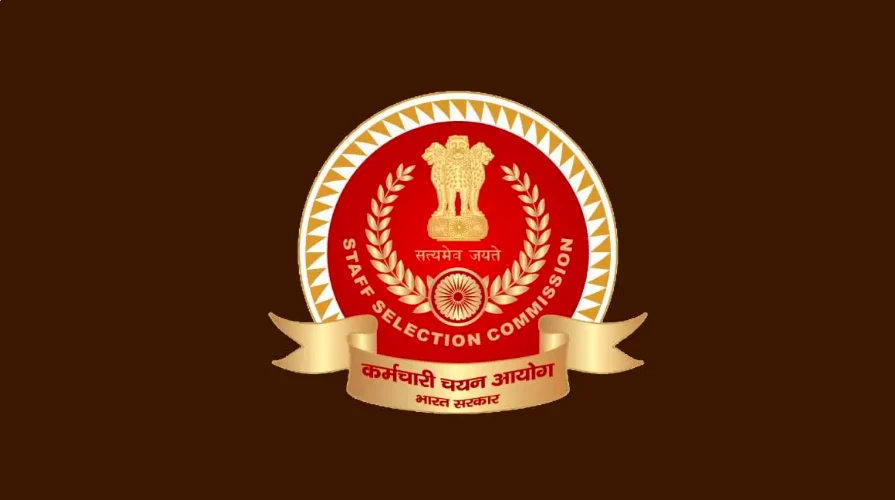

 Delhi Police Exam Cancelled on 18th Dece...
Delhi Police Exam Cancelled on 18th Dece...
 Delhi Police Slot Booking 2025 Live @ssc...
Delhi Police Slot Booking 2025 Live @ssc...
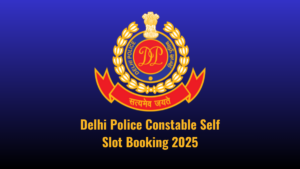 Delhi Police Constable Self Slot Booking...
Delhi Police Constable Self Slot Booking...
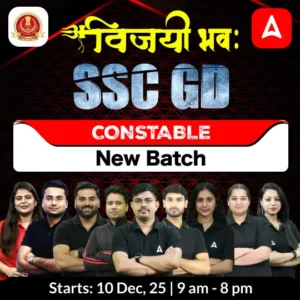
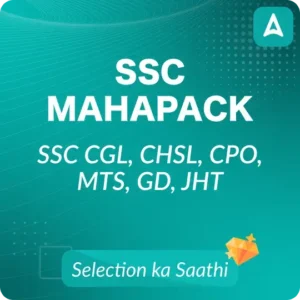
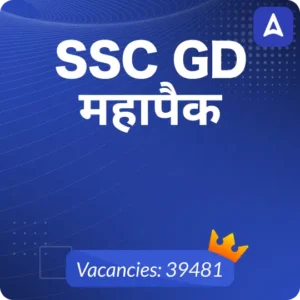
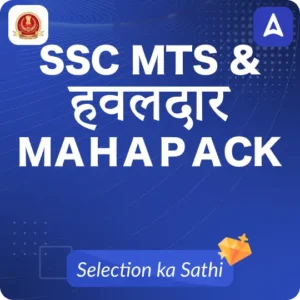
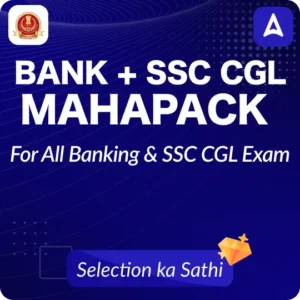
 Adda247 Job portal has complete information about all Sarkari Jobs and Naukri Alerts, its latest recruitment notifications, from all state and national level jobs and their updates.
Adda247 Job portal has complete information about all Sarkari Jobs and Naukri Alerts, its latest recruitment notifications, from all state and national level jobs and their updates.



